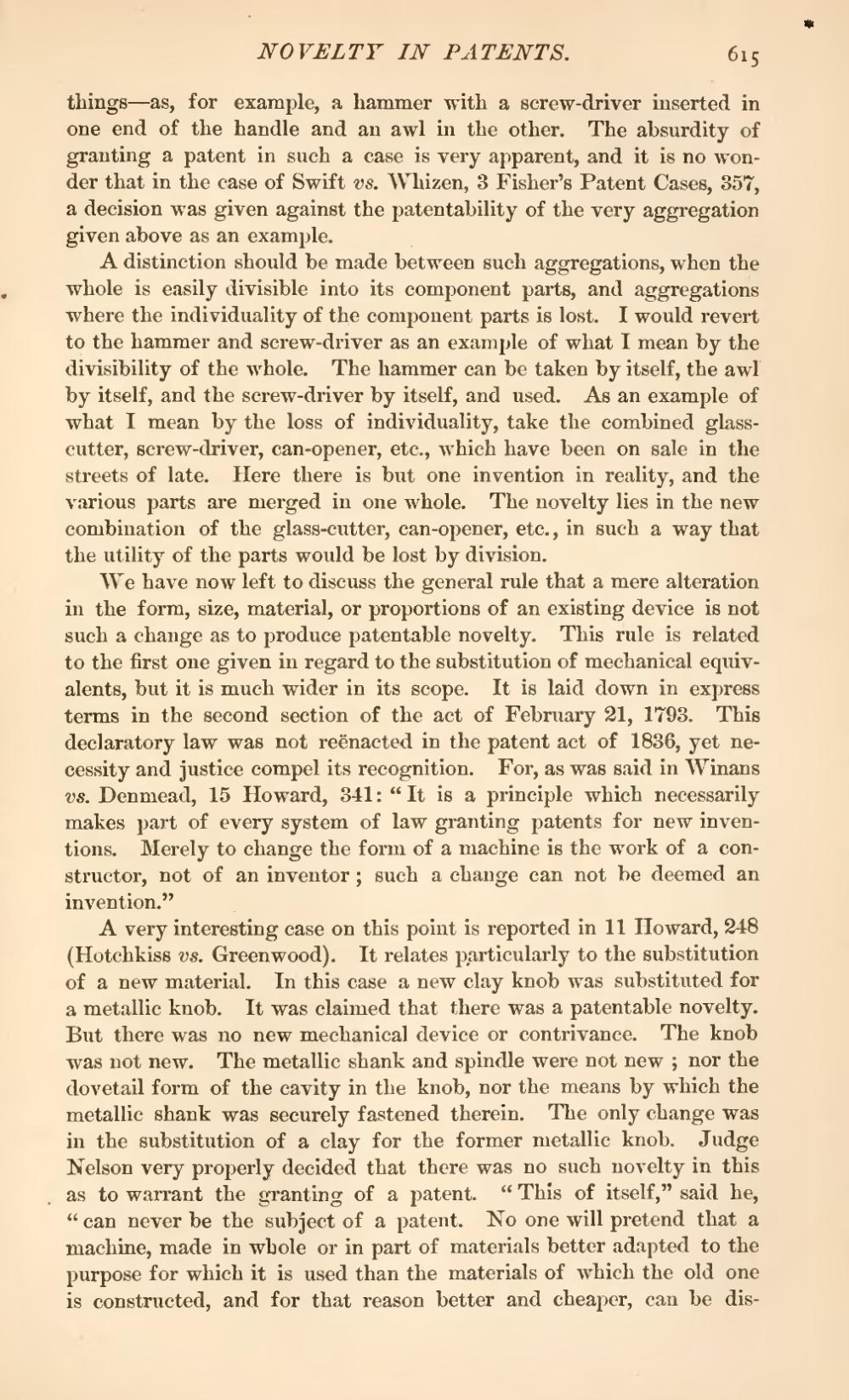things—as, for example, a hammer with a screw-driver inserted in one end of the handle and an awl in the other. The absurdity of granting a patent in such a case is very apparent, and it is no wonder that in the case of Swift vs. Whizen, 3 Fisher's Patent Cases, 357, a decision was given against the patentability of the very aggregation given above as an example.
A distinction should be made between such aggregations, when the whole is easily divisible into its component parts, and aggregations where the individuality of the component parts is lost. I would revert to the hammer and screw-driver as an example of what I mean by the divisibility of the whole. The hammer can be taken by itself, the awl by itself, and the screw-driver by itself, and used. As an example of what I mean by the loss of individuality, take the combined glasscutter, screw-driver, can-opener, etc., which have been on sale in the streets of late. Here there is but one invention in reality, and the various parts are merged in one whole. The novelty lies in the new combination of the glass-cutter, can-opener, etc., in such a way that the utility of the parts would be lost by division.
We have now left to discuss the general rule that a mere alteration in the form, size, material, or proportions of an existing device is not such a change as to produce patentable novelty. This rule is related to the first one given in regard to the substitution of mechanical equivalents, but it is much wider in its scope. It is laid down in express terms in the second section of the act of February 21, 1793. This declaratory law was not reënacted in the patent act of 1836, yet necessity and justice compel its recognition. For, as was said in Winans vs. Denmead, 15 Howard, 341: "It is a principle which necessarily makes part of every system of law granting patents for new inventions. Merely to change the form of a machine is the work of a constructor, not of an inventor; such a change can not be deemed an invention."
A very interesting case on this point is reported in 11 Howard, 248 (Hotchkiss vs. Greenwood). It relates particularly to the substitution of a new material. In this case a new clay knob was substituted for a metallic knob. It was claimed that there was a patentable novelty. But there was no new mechanical device or contrivance. The knob was not new. The metallic shank and spindle were not new; nor the dovetail form of the cavity in the knob, nor the means by which the metallic shank was securely fastened therein. The only change was in the substitution of a clay for the former metallic knob. Judge Nelson very properly decided that there was no such novelty in this as to warrant the granting of a patent. "This of itself," said he, "can never be the subject of a patent. No one will pretend that a machine, made in whole or in part of materials better adapted to the purpose for which it is used than the materials of which the old one is constructed, and for that reason better and cheaper, can be dis-

